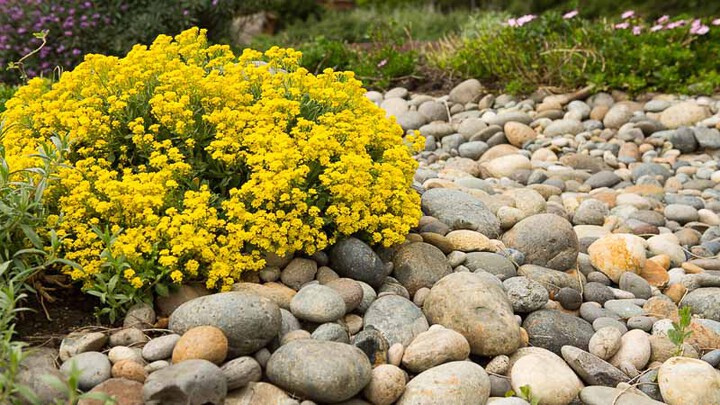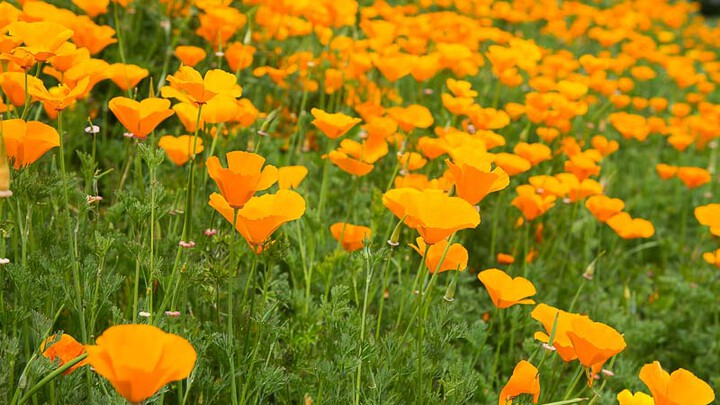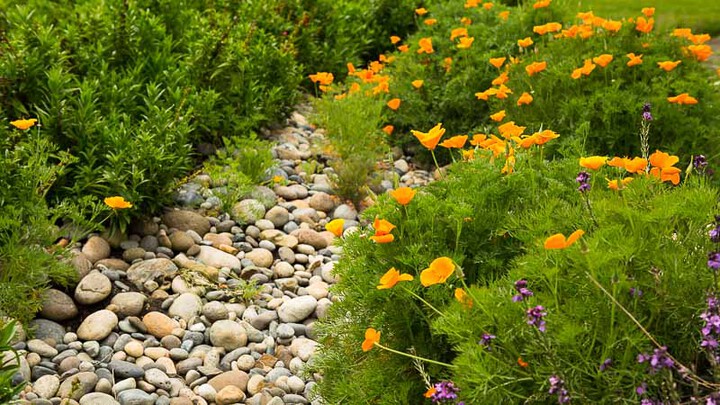When you take a little bit of time to protect soil and manage erosion in your yard there are big returns. Not only will soil stay where you want it, but you’ll use less water, the garden looks tidy, and plants flourish.
The first step to managing erosion is to identify places where it may occur. Look to slopes, hillsides, paths of water after it rains, and places you’re actively watering. If you see exposed roots, runnels, puddles, or mud splashing up on surfaces there are a few easy steps you can take to stop erosion in its tracks.
The basics of erosion control revolve around two simple principles:
1.Stabilize soil
2.Target where and how you water
Stabilize Soil
When looking for ways to stabilize soil, first consider working with nature. If your yard is steep and hilly, terracing may be in order. However, some of the best solutions are often less labor intensive. Consider mulching exposed soil surfaces, overseeding your lawn, and strategically placing plants.
Growing ground covers and other perennials will hold soil in place naturally. If you’re in an especially wet part of the country or working with clay soils, adding a rain garden is not only helpful but beautiful.

Mulching
Shredded bark, wood chips, rock, gravel, leaves, and even pine needles make great mulch. Look for locally sourced materials whenever possible. However, you may want to avoid coco bean hulls if you’re a dog owner and don’t use pine needles or gravel in food gardens. Use leaves, straw, or coarse compost around kitchen garden plants instead. Cover bare patches of soil, hill sides, and spaces between plants with 1 to 2 inches of mulch. This will protect soil from overhead watering and rain, keeping it in place. It also minimizing evaporation and feeding soil at the same time.
Overseeding Lawn
Consider adding extra seed to cover ground and fill in bare patches in your lawn. Overseeding lawns increase root density and these roots help hold soil and water in place. This makes for a happier, healthier climate for grasses to grow and keeps soil at the root zone, right where you want it.

Ground Cover
Ground cover comes in all shapes and sizes. Creeping thyme, lawn daisies, sweet woodruff, poppies (like the ones pictures) and even succulents form a fabulous ground cover. The roots of larger perennial plants do the job too. Start with the plants you love and go from there. Roots of plants do a wonderful job of reducing erosion.
Rain Gardens & Plant Catchments
Sometimes the best solution is to catch and control water when it’s moving downhill or by creating a garden in low points. In fact, the problem of erosion presents an opportunity for a garden you may not have anticipated. A well-positioned rain garden can cut down on erosion and the possibility of pollutants reaching neighboring tributaries by over 30%. To plant a rain garden, select water loving plants adapted to your region and climate, and add stones and other features to direct the water.

Target Where & How You Water
Even your best rain dance can’t control when and how much water falls from the sky, but where and how you water is a simple fix to reducing erosion. It begins by determining what needs water and targeting only these locations. Using a Flexogen Super Duty Hose and Adjustable Pattern Master Circular Sprinkler will allow you to customize the spray to water only where you need it.
Where to Water
It’s best to plant in “zones” and to base these zones on specific plant requirements. Group water wise plants (plants that typically like well-draining soil that dries out between waterings) together, water loving plants together, etc. This makes it easy to give each part of your yard the right amount of water and keep the plants alive. It also allows you to focus attention on the areas of the yard that need water, letting the spaces in between go dry. With this method, you’re conserving water and reducing the possibility of erosion.
The Adjustable Pattern Master Circular Sprinkler is a great tool for targeting where you water because it’s just that, adjustable. The amount and direction of spray is easily fine-tuned for nearly every possible watering need or zone in your yard.
How to Water
Landscape plants, perennials, grasses, and even many annuals need a good, deep watering every few days rather than a light watering every day. Watering deeply encourages root growth which further helps stabilize soil. Plan to water plants 2 to 3 times a week in warmer months, adjusting the frequency based on weather. If you’re experiencing an exceptionally rainy summer, then the need to water will be less and, vice versa.
In general, it’s best to water in the morning, between 6 a.m. and 10 a.m., when wet foliage has an opportunity to dry through the course of the day. However, watering times will also depend on how you use your outdoor space, when you want to play on the lawn, and average daily temperatures. If you’re in the mountains or high desert where morning temperatures can drop to near freezing even in summer months, wait until later in the morning before watering to reduce the chance of plant stress.